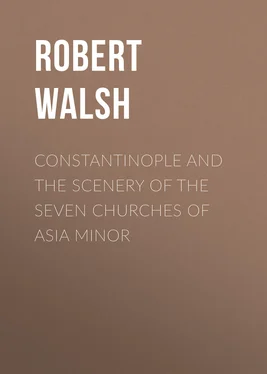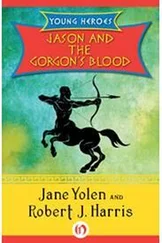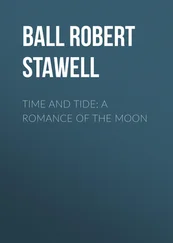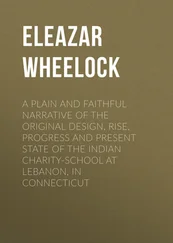Robert Walsh - Constantinople and the Scenery of the Seven Churches of Asia Minor
Здесь есть возможность читать онлайн «Robert Walsh - Constantinople and the Scenery of the Seven Churches of Asia Minor» — ознакомительный отрывок электронной книги совершенно бесплатно, а после прочтения отрывка купить полную версию. В некоторых случаях можно слушать аудио, скачать через торрент в формате fb2 и присутствует краткое содержание. Жанр: foreign_prose, foreign_home, История, foreign_antique, на английском языке. Описание произведения, (предисловие) а так же отзывы посетителей доступны на портале библиотеки ЛибКат.
- Название:Constantinople and the Scenery of the Seven Churches of Asia Minor
- Автор:
- Жанр:
- Год:неизвестен
- ISBN:нет данных
- Рейтинг книги:5 / 5. Голосов: 1
-
Избранное:Добавить в избранное
- Отзывы:
-
Ваша оценка:
- 100
- 1
- 2
- 3
- 4
- 5
Constantinople and the Scenery of the Seven Churches of Asia Minor: краткое содержание, описание и аннотация
Предлагаем к чтению аннотацию, описание, краткое содержание или предисловие (зависит от того, что написал сам автор книги «Constantinople and the Scenery of the Seven Churches of Asia Minor»). Если вы не нашли необходимую информацию о книге — напишите в комментариях, мы постараемся отыскать её.
Constantinople and the Scenery of the Seven Churches of Asia Minor — читать онлайн ознакомительный отрывок
Ниже представлен текст книги, разбитый по страницам. Система сохранения места последней прочитанной страницы, позволяет с удобством читать онлайн бесплатно книгу «Constantinople and the Scenery of the Seven Churches of Asia Minor», без необходимости каждый раз заново искать на чём Вы остановились. Поставьте закладку, и сможете в любой момент перейти на страницу, на которой закончили чтение.
Интервал:
Закладка:
Robert Walsh
Constantinople and the Scenery of the Seven Churches of Asia Minor / Series One and Series Two in one Volume
PREFACE
Nothing can form a stronger contrast in modern times, than Asiatic and European Turkey. The first preserves its character unchanged−men and things still display the permanency of Oriental usages; and they are now as they have been, and will probably continue to be, for an indefinite period.
Not so the second−Constantinople having for centuries exhibited the singular and extraordinary spectacle of a Mahomedan town in a Christian region, and stood still while all about it were advancing in the march of improvement, has at length, as suddenly as unexpectedly, been roused from its slumbering stupidity; the city and its inhabitants are daily undergoing a change as extraordinary as unhoped for; and the present generation will see with astonishment, that revolution of usages and opinions, during a single life, which has not happened in any other country in revolving centuries.
The traveller who visited Constantinople ten years ago, saw the military a mere rabble, without order or discipline, every soldier moving after his own manner, and clad and armed after his own fashion; he now sees them formed into regular regiments, clothed in uniform, exercised in a system of tactics, and as amenable to discipline as a corps of German infantry. He saw the Sultan, the model of an Oriental despot, exhibited periodically to his subjects with gorgeous display; or to the representatives of his brother sovereigns, gloomy and mysterious, in some dark recess of his Seraglio: he now sees him daily, in European costume, in constant and familiar intercourse with all people−abroad, driving four-in-hand in a gay chariot, like a gentleman of Paris or London; and at home, receiving foreigners with the courtesies and usages of polished life. He formerly saw his kiosks with wooden projecting balconies, having dismal windows that excluded light, and jalousies closed up from all spectators; he now sees him in a noble palace, on which the arts have been exhausted to render it as beautiful and commodious as that of a European sovereign. He formerly saw the people listening to nothing, and knowing nothing, but the extravagant fictions of story-tellers; he now sees them reading with avidity the daily newspapers published in the capital, and enlightened by the realities of passing events.
It is thus that the former state of things is hurrying away, and he who visits the capital to witness the singularities that marked it, will be disappointed. It is true, it possesses beauties which no revolution of opinions, or change of events, can alter. Its seven romantic hills, its Golden Horn, its lovely Bosphorus, its exuberant vegetation, its robust and comely people, will still exist, as the permanent characters of nature: but the swelling dome, the crescent-crowned spire, the taper minaret, the shouting muezzin, the vast cemetery, the gigantic cypress, the snow-white turban, the beniche of vivid colours, the feature-covering yasmak, the light caïque, the clumsy arrhuba, the arched bazaar−all the distinctive peculiarities of a Turkish town−will soon merge into the uniformity of European things, and, if the innovation proceed as rapidly as it has hitherto done, leave scarce a trace behind them.
To preserve the evanescent features of this magnificent city, and present it to posterity as it was, must be an object of no small interest; but the most elaborate descriptions will fail to effect it.
It is, therefore, to catch the fleeting pictures while they yet exist, and transmit them in visible forms to posterity, that the present work has been undertaken, and, that nothing might be wanting, Asiatic subjects are introduced; thus presenting, not only the Turk of one region as he was, but of another as he is, and will continue to be.
The Views are accompanied with letter-press, describing the usages, customs, and opinions of the people, as ancillary to the pictorial representations; and a Map of the Bosphorus is added, pointing out localities, and directing attention to the spot on which the reality stood or still stands. To complete the whole, an historical sketch of the city from its foundation is annexed, with a chronological series of its Emperors and Sultans to the present day; thus combining a concise history of persons and events, with copious details of its several parts, and vivid and characteristic representations of its objects.
ROBERT WALSH.
DRAWN & ENGRAVED BY ALEXR FINLAY & SON.
CONSTANTINOPLE and the BOSPHORUS.
HISTORICAL SKETCH OF CONSTANTINOPLE
The first mercantile expedition undertaken by the Greeks, to a distant country, was that to Colchis, the eastern extremity of the Black Sea, to bring back the allegorical golden fleece. This distant and perilous voyage, could not fail, in that rude age, to excite the imagination; so the poets have adorned its historical details with all the fascinations of fiction; the bold mariners who embarked in the ship Argo are dignified with the qualities of heroes, and their adventures swelled into portentous and preternatural events. The Symplegades were placed at the entrance of this dark sea, which closed upon and crushed the daring ships that presumed to penetrate into its mysteries, and so for ever shut out all access to strangers. But the intrepid sailors, whose names are handed down to posterity for their extraordinary physical powers, overcame every difficulty; and Jason, the Columbus of the ancient world, returned in safety with his golden freight. From that time the hitherto impervious sea changed its name. It had been called by the inhospitable appellation of Axenos , because it was inaccessible to strangers; it was now named Euxenos , as no longer repelling, but, on the contrary, inviting foreigners to its shores.
The dark Euxine, and all its visionary dangers, soon became familiar to the enterprising Greeks, and colonies were every where planted on the narrow waters that led to it. Little, however, was understood of the advantages of selecting a site for these young cities; and one of the first on record still remains, to attest the ignorance of the founders. In the year 685 before the Christian era, Argias led a colony from Megara, which he settled at the mouth of the Bosphorus. The site selected for the town was the shore of a shallow bay that indented the Asiatic coast, and was exposed to every wind. It was first called Procerastes, afterwards Colpusa, and finally Chalcedon.
A few years had brought experience to the Greeks, and a more mature judgment led them to select a better situation. About thirty years after, Byzas led another colony from Megara. He consulted the oracle, as was usual in such cases, where he should erect his new city; and the answer was, of course, wrapt in mystery. He was directed to place it “opposite the city of the blind men.” On exploring the mouth of the strait, he discovered, on the European shore, a situation unrivalled perhaps by any other in the world. A peninsula of gradual elevation was washed on one side by the Propontis, and on the other by a magnificent harbour, broad and deep, and sheltered from every wind, capable of holding in security all the ships of all known nations, and just within and commanding the mouth of the great watery thoroughfare to the newly discovered sea. Here they built their city, and called it Byzantium, after its founder Byzas, who, from his singular judgment and sagacity in maritime affairs, was also denominated the Son of Neptune. The accomplishment of the mysterious oracle was now apparent. The striking contrast between his selection and that of his predecessors on the opposite coast, caused their settlement to be called “the City of the Blind Men,” because its founder overlooked, or could not see the beauties and benefits of the site of Byzantium, when he had full liberty to choose. Byzantium was afterwards enlarged and re-edified by Pausanias, a Spartan, and, in process of time, from the singular superiority of its commanding situation and local advantages, became one of the most important of the free and independent republics of the Greeks, and suffered the penalty of its prosperity by becoming an object of envy and cupidity to its contemporaries.
Читать дальшеИнтервал:
Закладка:
Похожие книги на «Constantinople and the Scenery of the Seven Churches of Asia Minor»
Представляем Вашему вниманию похожие книги на «Constantinople and the Scenery of the Seven Churches of Asia Minor» списком для выбора. Мы отобрали схожую по названию и смыслу литературу в надежде предоставить читателям больше вариантов отыскать новые, интересные, ещё непрочитанные произведения.
Обсуждение, отзывы о книге «Constantinople and the Scenery of the Seven Churches of Asia Minor» и просто собственные мнения читателей. Оставьте ваши комментарии, напишите, что Вы думаете о произведении, его смысле или главных героях. Укажите что конкретно понравилось, а что нет, и почему Вы так считаете.












